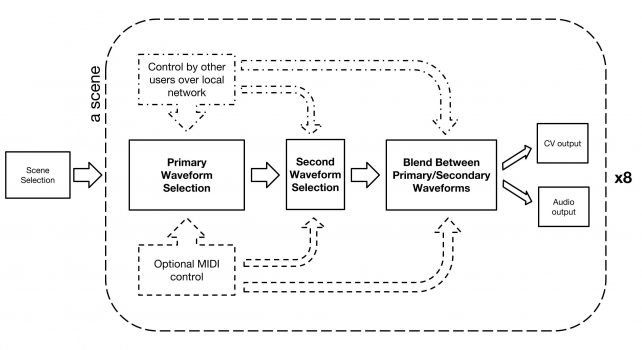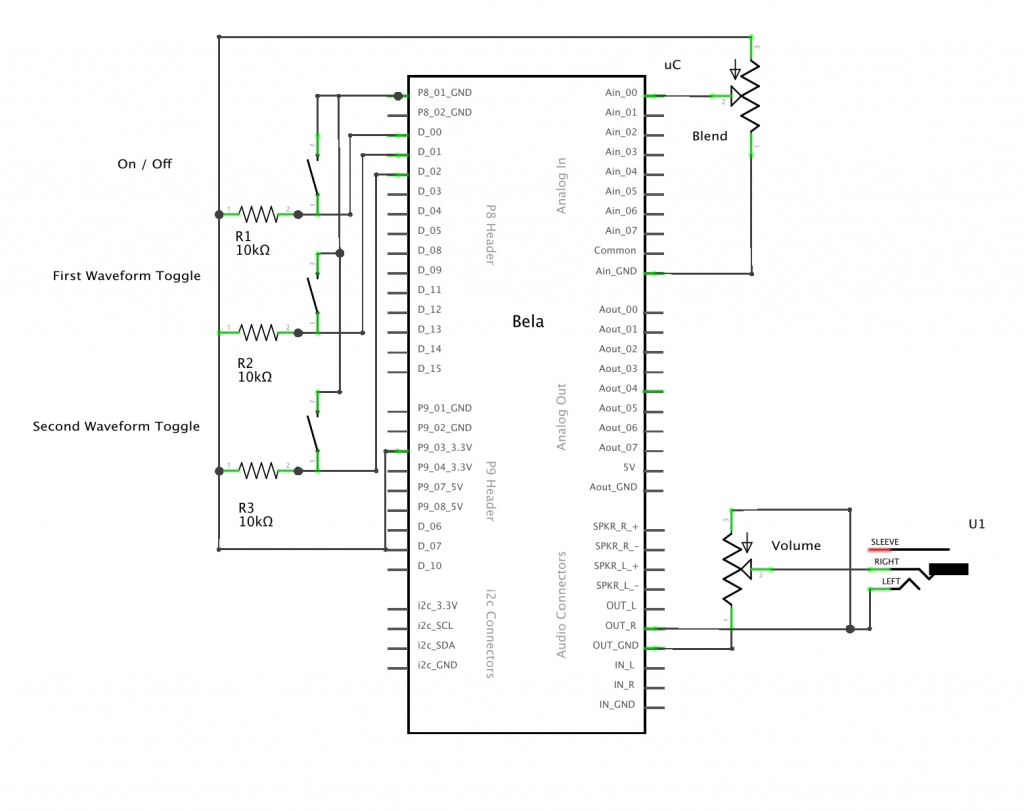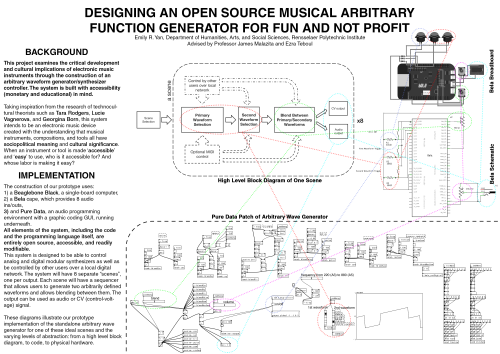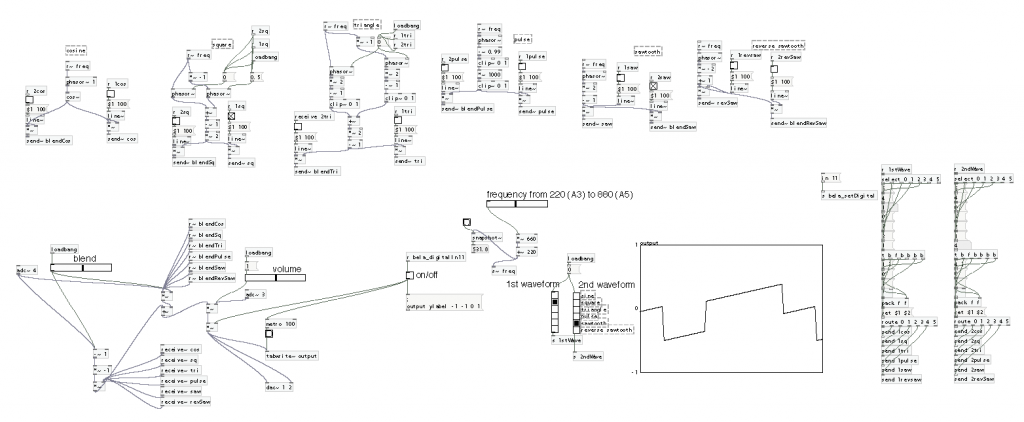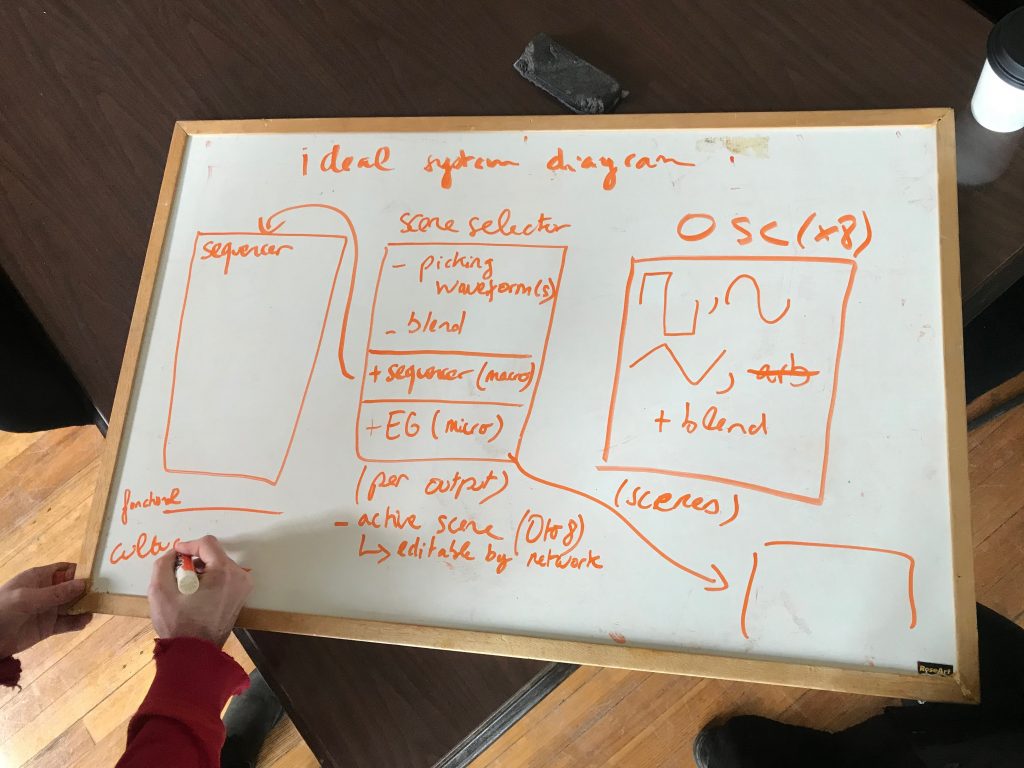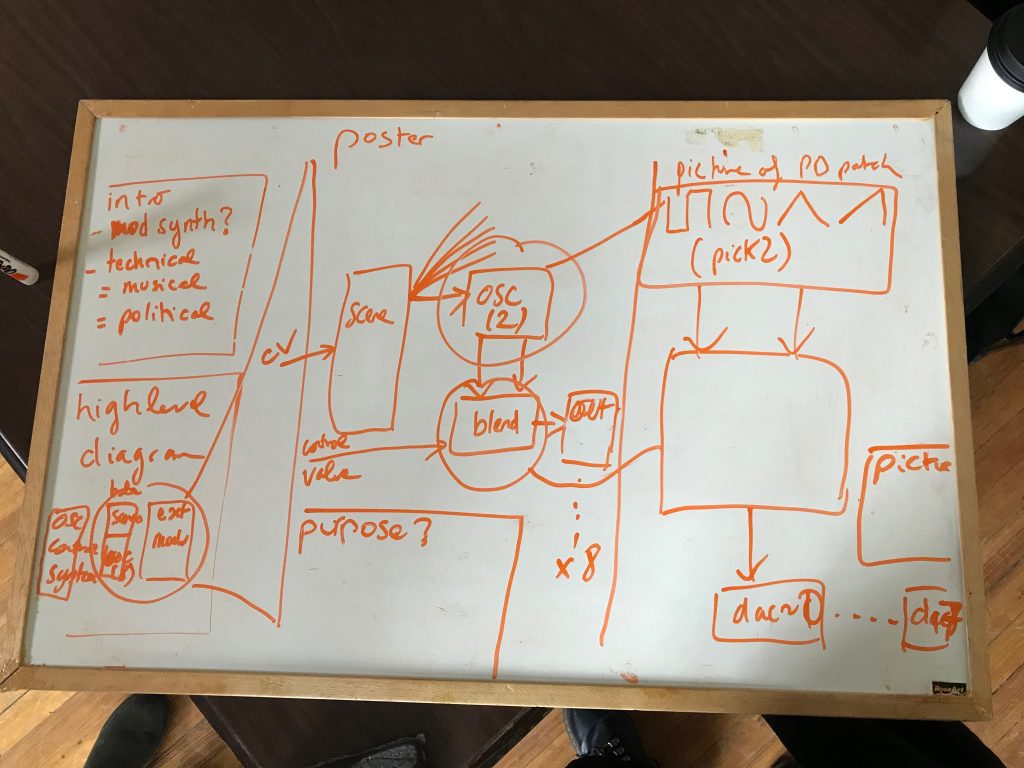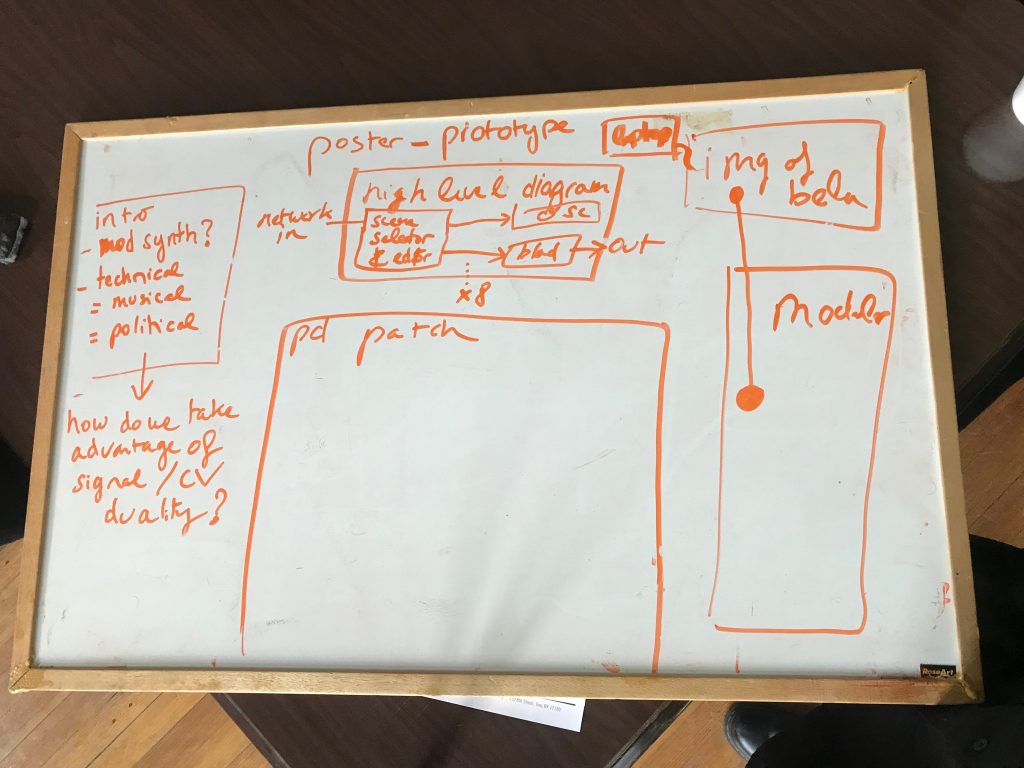The Arbitrary Waveform Generator (AWG) project focuses on the development of the hardware and software necessary to build an open source interface between digital audio programming languages and eurorack format modular synthesizers.
The Bela low latency audio shield designed by researchers in Andrew McPherson’s team at Queen Mary University in London (McPherson, 2017) provides our hardware with input and output functionality comparable to that implemented by commercial modules. It also enables us to write much of the software in the Pure Data audio programming language (Puckette, 1997). We’re using the open sound control (OSC) protocol to make all the digital controls addressable and updateable via a network. The hardware, which consists of linear attenuators and amplifiers, along with voltage protection circuits, ensures that each devices takes advantage of the full range of acceptable voltages without damaging some of the more fragile components. The whole system will be open sourced when the prototype offers functionality satisfyingly close to these objectives.
More than a technical research project, however, the Arbitrary Waveform Generator has been an opportunity for participants to question the protocols, standards and assumptions that make circuit design and code writing easier on a daily basis but obscure much of its material and historical bases. Each design decision is accompanied with research into the physical properties of the component, circuit topology, or code snippet produced or used, which has lead to the realization that numerous decisions, in addition to being to various extents arbitrary, also rely on assumptions whose justifications are either difficult to find (because undocumented) or difficult to assess (because imbricated in too many layers of abstractions). This project therefore includes an experimental approach to documentation and commenting, where we make sacrifices in readability for the sake of traceability. In this way, our projects place in what Siegfried Zielinski calls the variantology of technical media can be, at least, more easily understood. In other words, the cultural and semiotic implications of technical decisions in this sociotechnical context of music making can be better assessed.
Schematic
AWG Documentation
- 2018 Research Symposium Poster by Emily Yan
- AWG Diagram
Project Sketches
Team
Ezra Teboul – Project Head
